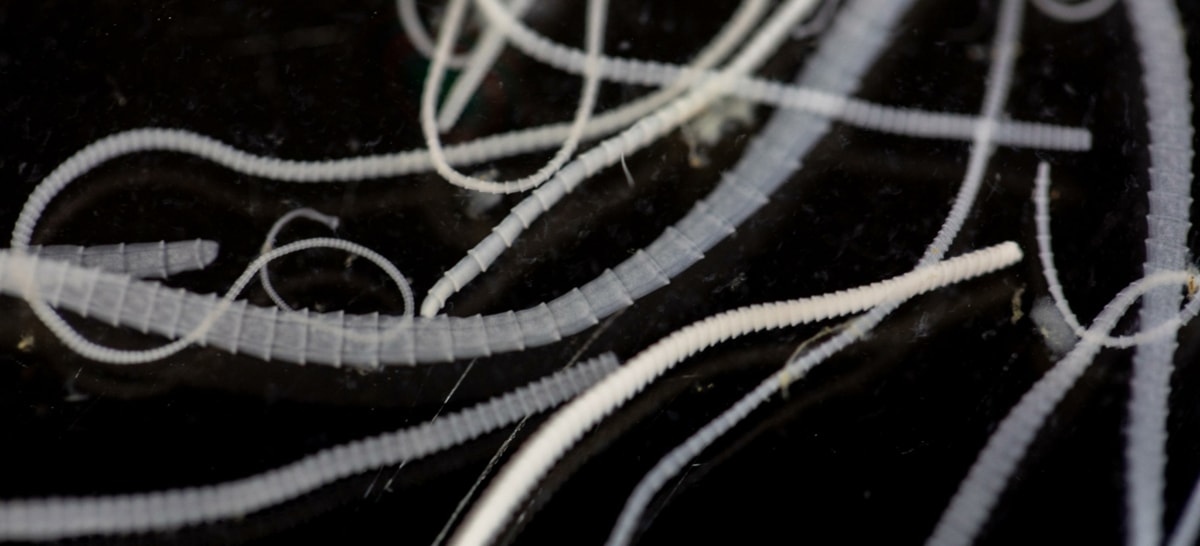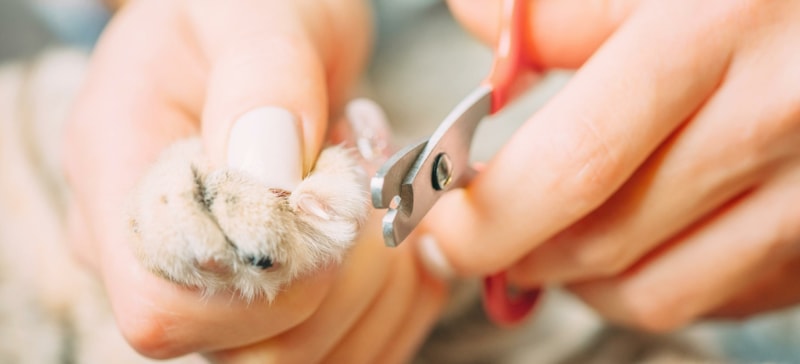
Pet Diseases
Daily Care
Advice
Poisons to pets
Ectoparasite and endoparasite treatment
Vaccination
Pet Diseases
Distemper is a highly infectious, highly fatal viral disease. It is transmitted by airborne droplets (e.g. cough) from an infected animal. It is very common among young animals, especially those housed in groups. The fatality rate among affected dogs is about 50%.

Heartworm disease is a serious and potentially fatal disease in pets. It is caused by a worm called Dirofilaria immitis. Heartworms are found in the heart and large adjacent vessels of infected pets.

Inflammatory Bowel Disease (IBD) is a chronic disease of the intestinal tract. Most affected dogs have a history of recurrent or chronic vomiting and/or diarrhoea.
During periods of vomiting or diarrhoea, the dog may lose weight but is generally normal otherwise.

It means that a yellow pigment is found in the blood and in the tissues.
It is most easily seen in the gingiva (gums), the sclerae (white part of the eyes), and the pinnae (ear flaps).

Tapeworms and roundworms are two of the most common intestinal parasites of pets.
Tapeworms are long flat worms composed of many individual segments whereas roundworms are much shorter and have rounded bodies.

Dental disease is extremely common in animals, especially as they get older. Signs include:
- Heavy tartar deposits
- Loose, broken or diseased teeth
- Inflamed gums
- Smelly Breath
- Drooling
- Pain when eating

Daily Care
- Cleaning your pet’s teeth daily can help delay the need for a dental in the future
- You should brush your pet’s teeth at a time when they are calm and relaxed. Set a routine so they come to expect it and get used to it.
- You should use a dog/cat toothbrush (softer bristles and angled to make it easier) and dog/cat toothpaste as they come in dog/cat friendly flavours and don’t contain chemicals that will hurt your pet’s stomach like human toothpaste does.
- Get them used to the procedure by running your fingers over their gums and teeth.
- Put the toothpaste on your finger and let them lick it off (like a treat) so they get used to it.
- When they are used to you touching their mouth, you can try gently brushing with the toothbrush at a 45 degree angle against the teeth to clean off the plaque.
- Aim for 2 minutes of brushing. You may have to work up to this over a period of days/weeks. Start with the back teeth as that’s where more plaque and tartar builds up.
- After brushing, reward them with a treat or extra attention so they learn to enjoy the process.

- Clipping your pets nails saves your furniture and skin from being scratched too badly and should be introduced early in your pets life.
- To get your pet used to nail clipping, you should handle their paws from an early age so they get accustomed.
- You should also get them accustomed to the nail clippers, let them sniff them and then praise them and offer a treat. Then you can touch the clipper on each paw and again praise them and give them a treat.
- When they are comfortable with this, you can clip a nail or two and give them a treat and praise.
- Make sure you don’t clip too much off or the nails will bleed. The quick is an area of the nails full of blood vessels so avoiding that is essential. In white nails you can see the quick as a red triangle, in black nails it’s more challenging, but look for a chalky white ring and clip less just in case.
- Put your thumb on the pad of the foot and a forefinger on the toe, push the toe forward and extend the nail. Clip in a straight line across the nail in front of the quick in one quick clip.
- If they are comfortable with this, then next time you can clip the rest.
- Adding a treat like peanut butter to the mat/floor they are standing on can distract them while you clip.
- The more you practice and get them used to the process, the easier it will be to continue in the future. Keep clipping a nail or two until you’ve clipped them all and they are comfortable with the process.

Advice
- Why should my pet lose weight?
Obesity can lead to an increased risk of a variety of different diseases:- Type 2 diabetes
- Heart disease
- Osteoarthritis (arthritis)
- Increased frequency of joint injuries
- High blood pressure
- Diet:
- You can either feed a weight loss diet or feed less of the current food and increase exercise.
- If you are starting a weight loss diet, it should take a week to transition from one diet to another. This will minimise digestive issues.
- Start by feeding ¼ of the new diet mixed with the ¾ of the old diet for one or two days, then increase to half-and-half for two days, then feed ¾ new food and ¼ old food for the final two or three days before feeding only the new diet.
- Exercise:
- Increase the length or frequency of your daily walks (dogs).
- Feed their food in a puzzle ball so they have to work for their food and they’ll feel more full after too.
- Play with them with toys for 10/15 mins a couple of times a day.
- Move the food bowl upstairs so they have to climb the stairs to get to their food.
- Tips and tricks:
- Play with them instead, a lot of pets substitute food for attention, so you can displace meal times with playtimes.
- Feed five or six meals a day by breaking up the daily calories into multiple meals.
- Don’t feed snacks or extra food.
- Go for a walk if they beg for food, it can distract them from their perceived desire for food (dogs).
- Don’t use an automatic feeder unless it opens with a timer so you can measure exactly how much food is delivered each day.
- When the bowl is empty and they beg for some more, just give a few kibbles from their daily calculated food (not a handful).
- If you want to give treats, give something crunchy like baby carrots, broccoli, french beans. Do not give high calorie foods like bread/pasta or dog biscuits (dogs).
- If there are multiple animals in the house, feed each separately in different rooms so you can monitor exactly how much each animal eats. Take away uneaten food 15-30 mins after putting it down.
The weight loss journey should take 6-8 months, don’t be disheartened if it doesn’t happen quickly, it’s a long process.

Know the signs of heat stroke
- Rapid panting
- Wide eyes
- Drooling
- Diarrhoea
- Dark red mucous membranes
- 搖晃欲倒
- 虛弱
- Dogs don’t sweat like humans, they regulate their temperatures through panting and sweating through their nose and foot pads. It’s also much warmer for them down low to the hot ground. Take lots of breaks in the shade to let them cool down and bring plenty of water for them.
- Be aware of the fitness level of your dog. Start with shorter hikes to build them up to the more difficult ones. Also, different breeds are more capable of hiking than others. Short nosed breeds (brachycephalic) like pugs and french bulldogs, overweight dogs or dogs with thick fur are more susceptible to the heat so make sure the hiking trail is appropriate.
- Keep your dog on a leash as there are lots of dangers when hiking; steep drops, wild boar, snakes, porcupines, monkeys. If bitten by a snake, you need to get them immediately to a local vets. Ring ahead to see if they have the antivenom and if they don’t, they can direct you to a vets that will stock it.

Dogs
- Reasons to neuter:
- Male
- Eliminate risk of testicular cancer
- Reduce risks of prostate cancer
- Reduces risk of pancreatic cancer
- Less desire to roam
- Less aggressive
- Female
- Prevent unplanned puppies
- Eliminates pyometra (uterine infection) developing
- Reduces the risks of mammary tumours
- Spayed dogs were found to live 23% longer
- When to neuter: 6 months
- Male
CATS
- Reasons to neuter:
- Male
- Eliminate risk of testicular cancer
- Reduce risks of prostate cancer
- Reduces risk of pancreatic cancer
- Less desire to roam
- Less aggressive
- Less likely to get into fights
- Less urine spraying
- Male
- Female
- Prevent unplanned puppies
- Eliminates pyometra (uterine infection) developing
- Reduces the risks of mammary tumours
- Less urine spraying
- Won’t go into heat
- Spayed cats were found to live 39% longer
- When to neuter: Just before their first season – around 6 months old

- All dogs in Hong Kong, over the age of 5 months, must be registered with an AVID 9-digit microchip, vaccinated against rabies and registered.
- The microchip is about the size of a grain of rice and is implanted under the skin using a needle. The microchip is registered with a code that will remain with your dog for the rest of its life.
- Microchipping has to be performed by a vet and a rabies vaccine will be given at the same time.
- The microchip is implanted between the shoulder blades and can be read by a microchip reader when needed.

Poisons to pets
Dogs
- Mouse and rat poisons (rodenticides)
- Anti-inflammatory medications
- Xylitol (sugar-free gum & more)
- Antidepressant Medications
- Acetaminophen (e.g., Tylenol)
- Vitamin D Overdose
- Stimulant Medications (e.g., for ADD/ADHD)
- Fertilizers
CATS
- Lilies (Lilium species)
- Spot-on flea/tick medication for dogs
- Household Cleaners
- Antidepressant Medications
- Essential Oils
- Anti-inflammatory Medications
- Mouse and rat poisons (rodenticides)
- Stimulant Medications (e.g., for ADD/ADHD)
- Vitamin D Overdose

Chocolate, coffee and caffeine |
|
Alcohol |
|
Avocado (dogs) |
|
Grapes and raisins |
|
Macadamia nuts (dogs) |
|
Nuts |
|
Onion, garlic and chives |
|
Salt and salty snack foods |
|
XylitolSweetener in many products, including gum, candy, baked goods and toothpaste |
|
Yeast dough |
|

Ectoparasite and endoparasite treatment
Dogs | REVOLUTION® _Spot on |
|
FRONTLINE®Plus _Spot on |
| |
NexGard Spectra _Chewable |
| |
PROHEART® _Injection |
| |
HEARTGARD® _Chewable |
| |
POPANTEL® _Tablet |
| |
Bravecto _Chewable |
| |
CATS | REVOLUTION®_Spot on |
|
Profender®_Spot on |
| |
Dogs & Cats | Quantel_Tablet |
|
Panacur_Oral Paste |
|
Vaccination
AGE | Dogs | CATS |
8-10 weeks | First DHPPiL vaccination | First FVRCP vaccination |
12 weeks | Second DHPPiL vaccination Rabies vaccination | Second FVRCP vaccination Rabies vaccination (optional) |
16 weeks | Third DHPPiL vaccination | Third FVRCP vaccination |
Every year | DHPPiL, Lepto 4 vaccination booster | FVRCP vaccination booster |
*It is possible to vaccinate earlier particularly in high risk cases. Please consult your vet.
- DHPPiL Vaccine
When it comes to keeping your dog healthy, the DHPPiL vaccine is a must-have. This vital vaccine should be given annually, even to dogs that spend most of their time indoors. It provides protection against serious and potentially fatal dog diseases, such as Distemper, Hepatitis, Parvovirus, Parainfluenza, and Leptospirosis.
Puppies should receive the vaccine at 8, 12, and 16 weeks of age, followed by a booster shot once a year to maintain immunity. - Rabies Vaccine
By the law of Hong Kong, all dogs above 5 months of age must be vaccinated against rabies. The vaccination must be repeated every 3 years. As part of the process, a microchip is implanted, and a dog license is issued. - Kennel Cough Vaccine
This annual vaccine is recommended for dogs who regularly play with other dogs, attend dog shows, or stay in boarding kennels. - Proheart Heartworm Prevention
Although Proheart is not technically a vaccine, it is a highly effective way to protect your furry friend from heartworm disease, a potentially fatal illness transmitted by mosquitoes. Annual inoculation is recommended for all dogs, whether they're indoor or outdoor pets.
- FVRCP Vaccine
This vaccine protects against 3 common and potentially serious cat diseases:
1. Feline Viral Rhinotracheitis
2. Panleukopenia
3. Feline Calicivirus
Kittens should receive their first dose at 8 weeks, followed by another at 12 and 16 weeks of age, with a booster shot once a year to maintain immunity.
- Rabies Vaccine
While rabies may not be common in cats in Hong Kong, it's still important to protect your feline friend if they're traveling or emigrating abroad. - Proheart Heartworm Prevention
Although heartworm is primarily a disease of dogs, it's still possible for cats to become infected in rare cases. As a responsible pet owner, it's up to you to decide whether your cat needs heartworm prevention.
 2713 4155
2713 4155




